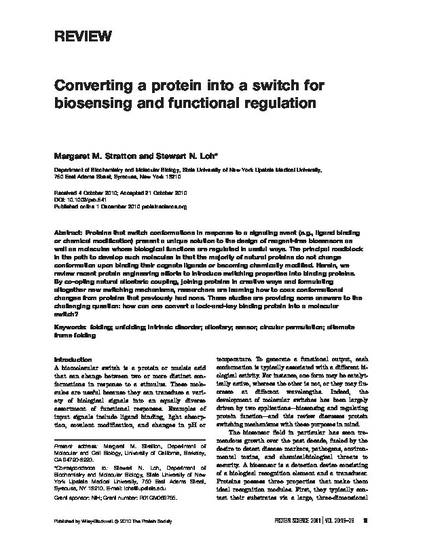
Proteins that switch conformations in response to a signaling event (e.g., ligand binding or chemical modification) present a unique solution to the design of reagent-free biosensors as well as molecules whose biological functions are regulated in useful ways. The principal roadblock in the path to develop such molecules is that the majority of natural proteins do not change conformation upon binding their cognate ligands or becoming chemically modified. Herein, we review recent protein engineering efforts to introduce switching properties into binding proteins. By co-opting natural allosteric coupling, joining proteins in creative ways and formulating altogether new switching mechanisms, researchers are learning how to coax conformational changes from proteins that previously had none. These studies are providing some answers to the challenging question: how can one convert a lock-and-key binding protein into a molecular switch?
Available at: http://works.bepress.com/margaret-stratton/2/
